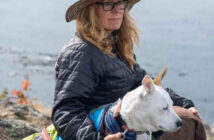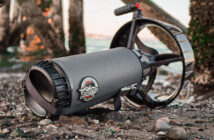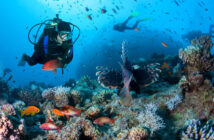New Zealand’s coasts and oceans have been featuring a lot on TV lately, with the airing of TVNZ’s second season of the Big Blue Backyard series, and Coast. While this show features stunning, wild, remote locations such as Fiordland, the Kermadec island’s and White Island, I always feel they are missing out one gem: Wellington.
The diving in Wellington, particularly on the South Coast, may be one of New Zealand’s best kept secrets, except to those who live there. Known for its chaotic weather and rugged, wild coastline, on first appearances it seems the most unlikely diving location. However, as the area is fed by three major ocean currents and has a wide variety of habitats, the environment is highly productive and incredibly diverse.
My first experience diving in Wellington (and diving altogether) was at Sirens Reef in the Taputeranga Marine Reserve, situated on Wellington’s south coast. Established in 2008, this reserve is only six kilometres from the city centre, and is an easy shore dive for those wanting to experience the region. Although the reserve is still very young, marine life has come back remarkably well.
On my first Open Water dive I was silly enough to go without gloves, which invariably attracted a large number of curious blue cod, which seem to have an affinity for bare skin. This was a rather fortunate mistake, as although my hands were freezing, my first dive became one of my most memorable as I attracted a large audience of blue cod, transfixed by my white fingers, and nibbling at my loose strands of hair. Fish are extremely brave in the reserve, and even with gloved hands it doesn’t take much to have an entourage of cod and moki trailing you for the length of your dive.
Shore diving in the Taputeranga Marine Reserve is easiest if you enter from the carpark opposite Dive Wellington, the area’s local dive store. Set up in the carpark and then use the rocks as stairs to the beach where there are channels you can swim through to access the reef. The coast around this area is characterised by extensive rocky reefs that were uplifted in Wellington’s last major earthquake in 1855. The reefs visible from the coast actually form an extensive reef system running south to the limits of the marine reserve at about 40 m depth and 2.3 km out to sea. These rock formations create an interesting maze of rock towers and swim-throughs throughout the reserve. These can be challenging in southerly small swell, but are nevertheless a fun adventure, and for macro photographers and divers interested in small critters, they support an abundance of jewel anemones, sponges, sea-tulips and nudibranchs.
Other features of this area, and the reserve in general, are the large crayfish nests where you can see the clear effects of the reserve in action, and paua bigger than my head. If you look closely and take your time, you can always see small nudibranchs, especially where there are sponges, and the macro life in the area is abundant and diverse (particularly in the swim throughs and cracks).
While in winter the coast is not very forgiving, a week of northerlies can yield some stunning visibility (for Wellington), with schools of Mackerel, yellow-eyed mullet, kahawai, and kingfish. This activity invariably leads to some larger megafauna action, and it is not uncommon to see pods of 50-100 dolphins on a daily basis or if you’re lucky, an encounter with a pod of orca.
For more information on the Taputeranga Marine Reserve, go to the Department of Conservation’s website, here












